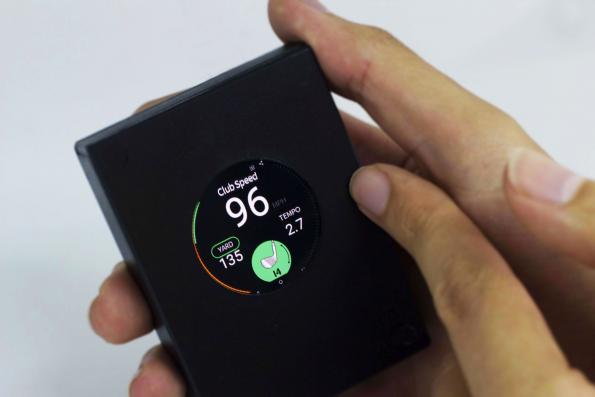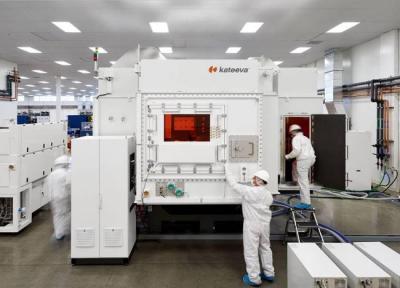OLED Encapsulation: introduction and market status - Page 5
IHS: The OLED encapsulation material market will grow at a 16% CAGR to reach $233 million by 2021
According to IHS, the OLED encapsulation material grew 4.7% in 2017 to reach $117 million. IHS expects the market to grow at a 16% CAGR to reach $233 by 2021.

The market growth rate will increase as new OLED fabs begin operation in China and Korea. IHS categorizes OLED encapsulation materials into metal, frit glass, TFE and hybrid. The metal type is mostly used for OLED TVs, in which IHS expects the fastest growth in terms of substrate size. Glass encapsulation will remain strong but will lose market share in the future.
Truly sees large demand for PMOLED displays, to dramatically increase capacity by next year
OLED maker Truly Semiconductor, based in Hong Kong, sees a large increase in PMOLED demand in the near future, and the company is executing an ambitious PMOLED capacity expansion plan.

Truly is currently operating two production lines: the P1 and P2 lines, both 2.5-Gen and with a monthly capacity of 625K and 1.25M pcs (Truly counts its capacity as per 1" displays). Truly has set out to build two new production lines. The P3 line which is a 2.5-Gen line with a capacity of 3.13 million 1 panels monthly is almost ready and will start mass production by the end of the month.
UBI Research sees PECVD as the in-organic TFE equipment of choice for flexible OLED production
UBI Research says that as OLED makers are diverting all efforts into flexible OLED production, thin film encapsulation (TFE) is gaining in popularity. Between 2017 and 2021, TFE will be applied to about 70% of all OLED panels in production. The OLED encapsulation equipment market will generate $11 billion in sales.

TFE encapsulation started out as a complex technology that required 11 layers and was slow and expensive. Recent advances allowed OLED makers to reduce the number of layers to just 3 and increase productivity and yields and so lower the production costs. Some film OLED makers opted for hybrid encapsulation (which uses a barrier film) but TFE seems to have become the technology of choice.
The US DoE awards five new OLED project grants
The US Department of Energy announced 11 new solid state lighting projects grants, out of which five are related to OLED technologies (the rest are for new LED technologies).

We already posted on two of these grants which were awarded to Pixelligent. In addition to Pixelligent, OLEDWorks were also awarded with two SBIR Phase 1 projects, one for an ultrathin, curved, high-efficiency OLED light engine that will reduce the cost OLED lighting and the second for the development of a novel substrate and encapsulation process.
Fraunhofer FEP develops a high-accuracy fingerprint sensor based on its bi-directional OLED microdisplays
The Fraunhofer FEP institute in Germany first unveiled its bi-directional OLED microdisplays in 2012 with the novel idea of embedding photo detectors between the OLED pixels. Since then the instituted demonstrated its second-generation microdisplay that supported a resolution of 800x600 (SVGA), up from VGA in the first generation prototypes.

The Fraunhofer FEP now announced that it developed a new generation of these displays, that employ an extra-think encapsulation layer, which can turn these new displays into fingerprint sensors. The idea is that the OLED display illuminates the fingers and then the reflected light is used to detect and analyze the fingerprint with excellent accuracy.
Kateeva doubles its manufacturing space in order to meet the demand for its OLED inkjet systems
OLED ink-jet developer Kateeva announced that it expanded its headquarters in silicon valley - in fact it doubled its manufacturing space in order to meet the demand for its inkjet systems.

Kateeva leased a new building adjacent to its HQ adding 75,000 sq. ft - mostly for manufacturing and business operations. Kateeva's current headcount has reached 330 people as orders for its YieldJet systems soared.
IHS sees the OLED production equipment market reaching $9.5 billion in 2017
IHS says that the OLED industry is now entering a huge capacity-growth phase, and IHS estimates that the AMOLED production equipment market will reach $9.5 billion in revenues in 2017.

Almost half of that amount will go to TFT backplane equipment ($4.4 billion in 2017), while the organic layer deposition market will reach 2.2 billion and the encapsulation tools market will reach $1.2 billion. IHS estimates that Canon Tokki is the leader in OLED deposition equipment, and has a market share of over 50%.
The DoE grants two new SBIR OLED lighting projects
The US Department of Energy (DoE) announced new SBIR and STTR grants for solid state lighting projects. The DoE announced five new grants out of which two are related to OLED technologies.
Pixelligent Technologies were awarded an SBIR project titled "Light Extraction for OLED Lighting with 3-D Gradient Index". This project will explore the application of a novel and unique 3D gradient index (GRIN) layer to improve the efficiency and lifetime of OLED devices. Using such a unique structure, OLEDs could be produced that achieve the theoretical maximum extraction efficiency.
Encapsulix to supply ALD-TFE equipment to a leading Asian AMOLED producer
 ALD equipment maker Encapsulix announced that a leading Asian AMOLED manufacturer has chosen its ALD-TFE deposition systems, to be used as flexible AMOLED encapsulation. The first tool is already under construction and will start operating in the spring of 2017.
ALD equipment maker Encapsulix announced that a leading Asian AMOLED manufacturer has chosen its ALD-TFE deposition systems, to be used as flexible AMOLED encapsulation. The first tool is already under construction and will start operating in the spring of 2017.
Encapsulix says that the order was awarded following an extensive evaluation of available ALD platforms, and this confirms the technological superiority and leading cost-of-ownership of the company's ALD-TFE equipment.
Meyer Burger ships an inkjet+PECVD OLED encapsulation system to an Asian customer
Meyer Burger announced that it has shipped a CONx TFE OLED thin film encapsulation system to an Asian customer. This system includes two deposition technologies, inkjet printing and PECVD to offer a complete encapsulation solution for flexible OLEDS.

The CONx TFE system compreses of Meyer Burger's proprietary remote plasma PECVD for inorganic coating and its PiXDRO inkjet printing technology for the deposition of accurately positioned and homogeneous organic layers. Meyer Burger says that the system provides excellent water and oxygen barrier properties without compromising the optical transparency of the encapsulation layer all the while operating at low temperatures and low ion bombardment.
Pagination
- Previous page
- Page 5
- Next page

